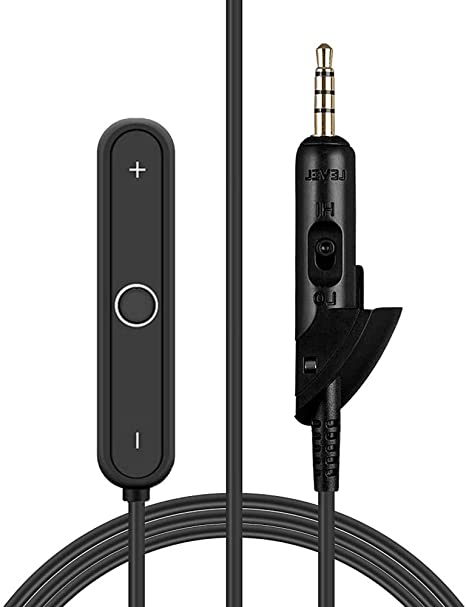The Anatomy of a Modern Miracle: Excavating the Technology Inside Budget Audio
Update on Jan. 1, 2026, 2:53 p.m.
In the grand timeline of human history, we are currently living in an era of unprecedented technological density. We are surrounded by objects that, had they appeared just fifty years ago, would have been considered artifacts of alien sorcery. Yet, because these objects are mass-produced and affordable, they often escape our wonder. We treat them as disposable utilities, overlooking the centuries of scientific struggle, accidental discoveries, and engineering triumphs compressed within their plastic shells.
There is perhaps no better example of this “invisible miracle” than the modern wireless earbud. Specifically, let us consider the ZINGBIRD X15-002 Wireless Earbuds. To the casual observer, it is a simple, budget-friendly consumer electronic device, priced to be accessible to almost anyone. It is a utilitarian tool for listening to music, taking calls, and blocking out the noise of the commute. But if we shift our perspective from that of a consumer to that of a technological archaeologist, this small black object transforms. It becomes a dense stratification of human ingenuity.
To hold a pair of wireless earbuds is to hold the culmination of the Industrial Revolution, the Information Age, and the breakdown of the barriers between high-fidelity audio and the mass market. It is a convergence point where Nobel Prize-winning chemistry meets World War II-era encryption concepts and Victorian-era physics. In this exploration, we will dissect the layers of technology that make devices like the ZINGBIRD X15-002 possible, tracing the lineage of its components back to the giants of science upon whose shoulders this compact device rests.
Stratum I: The Chemistry of Freedom (The Lithium-Ion Revolution)
The first and most critical limitation of any portable technology is energy. For centuries, humanity was tethered to the wall outlet or burdened by heavy, inefficient chemical cells. The freedom to move—to run a marathon with music, to commute without wires—is fundamentally a triumph of chemistry.
The Nobel Origins of Portable Power
The 60-hour playtime capability found in modern devices like the ZINGBIRD X15-002 (combining the earbuds and the charging case) is the direct result of the Lithium-Ion revolution. This technology is so pivotal that its inventors—John B. Goodenough, M. Stanley Whittingham, and Akira Yoshino—were awarded the Nobel Prize in Chemistry in 2019.
Before their work, batteries were heavy and prone to the “memory effect,” where they would lose capacity if not fully discharged. The breakthrough lay in utilizing lithium, the lightest metal on the periodic table, which has a high electrochemical potential. The genius of the lithium-ion battery is its mechanism of intercalation.
Imagine the battery’s electrodes (the anode and cathode) as molecular bookshelves. Lithium ions are the books. When you charge the device, you are forcing the lithium ions to move from the cathode to the anode, where they slot neatly between layers of graphite. This is a physical storage mechanism, not a chemical reaction that alters the electrodes permanently (like in lead-acid batteries). When you listen to music, the ions flow back to the cathode, releasing energy. This “rocking chair” movement allows for thousands of cycles with high energy density, enabling a tiny earbud weighing only a few grams to power a radio, a computer chip, and a speaker for five straight hours.
The Innovation of Distributed Energy
The architecture of modern TWS (True Wireless Stereo) earbuds introduces a fascinating evolution in energy management: the distributed battery system. The ZINGBIRD X15-002 is not just a pair of headphones; it is a three-part energy grid.
- The Satellites (Earbuds): Each earbud contains a micro-battery, optimized for extreme lightness and immediate power delivery.
- The Mothership (Charging Case): The case houses a significantly larger battery cell. Its primary function is not just storage, but refueling. It acts as a portable power bank dedicated to the satellites.
- The Interface (LED Display): Managing this complex relationship requires information. The dual digital power display on the X15-002’s case is the user interface for this energy grid, visualizing the invisible flow of ions.
This two-tier system solves the “range anxiety” of audio. While the micro-batteries may only hold enough charge for a few hours, the “mothership” extends the device’s autonomy to 60 hours—essentially a week of heavy use. This design philosophy acknowledges that while we cannot yet break the laws of physics to make infinite batteries, we can use engineering to mask the limitations from the user.

Stratum II: The Invisible Thread (Bluetooth & Spread Spectrum)
Once we have power, we need a signal. The magic of wireless audio is that it snatches a complex musical waveform from the air, invisible and uninterrupted. The protocol that governs this—Bluetooth—has a history as dramatic as any spy novel.
From Hedy Lamarr to the Viking King
The foundational concept behind Bluetooth is Frequency-Hopping Spread Spectrum (FHSS). Surprisingly, the intellectual roots of this technology trace back to Hollywood actress Hedy Lamarr and composer George Antheil during World War II. They developed a system for guiding torpedoes that would jump between different radio frequencies to prevent enemy jamming. The “jumping” pattern would be synchronized between the transmitter and receiver, like two people playing a piano duet who know exactly when to switch keys.
Decades later, in the 1990s, engineers at Ericsson in Sweden needed a low-power, short-range radio technology to connect phones to headsets. They adapted this frequency-hopping concept. The name “Bluetooth” was a placeholder code name, referring to King Harald Bluetooth, who united Scandinavian tribes in the 10th century—an apt metaphor for a technology designed to unite PC and cellular protocols.
Surviving the Jungle of 2.4 GHz
The ZINGBIRD X15-002 operates in the 2.4 GHz ISM (Industrial, Scientific, and Medical) band. This is the “wild west” of the radio spectrum. It is crowded with Wi-Fi signals, cordless phones, baby monitors, and even leakage from microwave ovens.
To survive in this chaotic environment without the audio stuttering or dropping out, the earbuds utilize advanced FHSS. The Bluetooth connection divides the 2.4 GHz band into 79 distinct channels. The earbuds and the smartphone hop between these channels 1,600 times per second. If Channel 5 is crowded with Wi-Fi noise, the devices instantly jump to Channel 50, then Channel 12, and so on.
This rapid switching is invisible to the user. All you experience is the “One-Step Pairing” described in the product’s manual: you open the case, and the connection is there. But beneath that simplicity is a frantic, synchronized dance of radio waves, dodging interference thousands of times a second to deliver a seamless stream of digital audio. The fact that this military-grade anti-jamming technology is now standard in an affordable consumer device is a testament to the commoditization of complex engineering.

Stratum III: The Victorian Engine (Dynamic Drivers & Acoustics)
If we strip away the digital decoding chips and the lithium batteries, we arrive at the heart of the device: the component that actually makes sound. Here, the timeline of our archaeological dig jumps back 150 years. The 13mm dynamic driver inside the ZINGBIRD X15-002 operates on principles that would be perfectly understandable to Alexander Graham Bell or Lord Kelvin in the 1870s.
The Physics of the Voice Coil
The dynamic driver is a transducer—a device that converts one form of energy (electrical) into another (mechanical/acoustic). Its operation relies on Lorentz Law and the relationship between electricity and magnetism.
- The Magnet: At the back of the driver is a permanent magnet, creating a static magnetic field.
- The Voice Coil: Suspended in this field is a coil of ultra-fine copper wire, attached to the diaphragm.
- The Diaphragm: This is a thin, cone-shaped membrane (often made of advanced polymers in modern earbuds) that pushes the air.
When the digital audio signal is converted to analog electricity, it flows through the voice coil. Following the laws of electromagnetism, the current creates a temporary magnetic field around the coil. This field interacts with the permanent magnet, causing the coil to be rapidly pushed away or pulled closer (attraction and repulsion). Since the coil is glued to the diaphragm, the diaphragm moves back and forth.
This piston-like motion compresses and rarefies the air particles, creating sound waves that travel into your ear canal.
The Importance of Size: 13mm
The ZINGBIRD X15-002 boasts a 13mm driver. In the world of earbuds, this is considered large. Most standard earbuds use 6mm to 10mm drivers. Why does size matter? It comes down to air displacement.
Low-frequency sounds (bass) have long wavelengths and require a significant amount of air to be moved to be felt and heard powerfully. A larger diaphragm can move more air with less excursion (travel distance), often resulting in deeper, richer bass response and a “larger” soundstage. The challenge with large drivers is that they can be heavier and slower, potentially muddying the high frequencies (treble). Modern material science solves this by using stiff, lightweight composites for the diaphragm, allowing a 13mm driver to be both punchy in the bass and crisp in the treble.
It is a profound realization that inside this digital, wireless marvel, the actual generation of sound is a purely analog, mechanical process that has remained fundamentally unchanged for a century and a half. We have refined the materials and shrunk the magnets, but the Victorian heart beats on.

Stratum IV: The Standardization of Survival (IP Ratings)
Technology is fragile. Water, dust, and sweat are the natural enemies of complex electronics. The final layer of our excavation involves the protective engineering that allows these devices to survive in the real world. The IPX5 rating of the ZINGBIRD X15-002 is not a marketing term; it is a rigorous engineering standard.
The Language of the IEC
“IP” stands for Ingress Protection, a code defined by the International Electrotechnical Commission (IEC) under standard 60529. The purpose of this system is to replace vague marketing terms like “water-resistant” with precise, testable definitions.
The code consists of two digits. The first digit (0-6) refers to protection against solid objects (dust). In the case of “IPX5”, the ‘X’ means the device was not tested for dust resistance—typical for earbuds that are not meant for construction sites.
The second digit (0-9) refers to liquids. The ‘5’ in IPX5 is significant. It means the device can withstand “water jets” projected by a nozzle (6.3mm) against the enclosure from any direction. It does not mean the device is waterproof (submersible); that would require a rating of 7 or 8.
Nano-Engineering for Reliability
Achieving IPX5 in a device with buttons, charging ports, and microphone holes is a challenge. It typically involves a combination of mechanical seals (gaskets) and hydrophobic nano-coatings.
These coatings are invisible layers, often chemically bonded to the internal components, that repel water molecules. When sweat or rain enters the earbud, instead of spreading out and short-circuiting the tiny traces on the circuit board, the water beads up and rolls off, leaving the electronics untouched. This invisible shield allows the ZINGBIRD X15-002 to transition from a delicate piece of electronics to a rugged fitness companion, capable of surviving intense workouts and adverse weather.

Conclusion: The Convergence of Value
When we reassemble these strata—the lithium ions, the frequency-hopping radio waves, the electromagnetic drivers, and the hydrophobic shields—we are left with a profound appreciation for the modern era. The ZINGBIRD X15-002 is a testament to the power of convergence.
In previous decades, high-fidelity audio, wireless communication, and all-day battery life were distinct, expensive luxuries. Today, thanks to global supply chains and the relentless march of material science, they have converged into a package accessible to everyone. The value of such a device is not merely in its price tag, but in the staggering amount of human history and scientific achievement compressed into its 3.68-ounce frame.
We are no longer just consumers of products; we are the beneficiaries of a centuries-long project to democratize technology. Every time we open that charging case and see the LED display light up, we are witnessing the continued legacy of Volta, Bell, Lamarr, and Goodenough, working in concert to deliver a song to our ears.


































